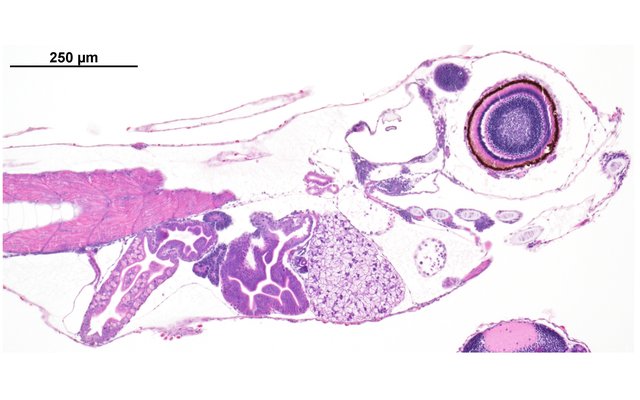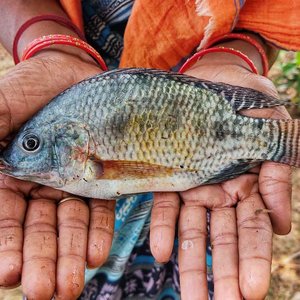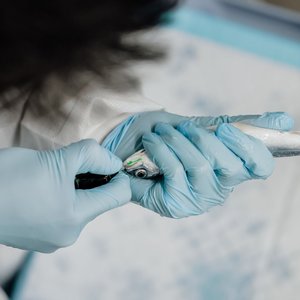Supported by European Union’s Horizon 2020 Research and Innovation Program and as a part of the project PerformFISH, a Multiparametric Semi-quantitative Scoring System (MSSS) has been developed at the University of Udine for the histology assessment of gilthead seabream and European seabass larvae and juveniles. The tool promptly recognizes health problems in a fish batch due to not optimal managerial practices, suggesting to fish farmers which direction take to solve them. Furthermore, some descriptors and values deriving from that tool can be exploited as larval/juvenile quality hallmarks.
Aimed to achieve standardization in semi-quantitative histological analyses and allow the comparison between histological samples from different batches at different developmental stages, the MSSS has been developed based on several tissues’ parts in marine fish larvae and juvenile batches.
The new system, which is not excessively expensive – it only requires image analysis software for basic research – and is based on good histological practices and a well-trained evaluator, applies to samples coming from commercial hatcheries, sampled in sub-optimal conditions. Initially developed for European seabass and gilthead seabream, it can be also applied to other fish species.
According to the researchers, semi-quantitative scoring depends on the observer’s experience and has poor reproducibility. Consequently, the MSSS was developed by overcoming these problems, applying blind assessment of samples, detailed criteria for scoring descriptors, repeatability of scoring between observers, and an adequate number of samples.

European seabass, middle metamorphosis stage, frontal section. Credits: Paola Beraldo
The scoring system
The MSSS was based on the analysis of six organs, gills, liver, anterior intestine, posterior intestine, pancreas with adipose tissues, and excretory system, all organs that can be influenced by farming management practices. For each of these organs, researchers picked morphologic elements (descriptors) to be scored between one and five according to the appearance that was revealed at the microscope.
As a result, the MSSS provides 18 descriptors that can be exploited according to the purpose of the survey. The descriptors can be summarized in two indexes. The Organ Condition Value (OCV) shows the general condition of each organ and by the individual descriptors. The Cumulative Histological Index (CHI) gives general information about the quality of a fish batch at a precise moment and ponders all the OCVs together according to their vital importance to the organ. Both OCV and CHI can range from one to twenty-five, where one is the best situation and twenty-five is the worst condition.
Although histology provides indications of the fish morphological condition in a precise instant of their life history and, therefore, as highlighted by the researchers, it is not possible to obtain predictive information of the fish quality at the end of the production cycle, MSSS provides a single number (CHI) useful to determinate on the status of the batch.
The tool can be applied to different critical developmental stages throughout the hatchery phase, to check the condition of larval batches, helping fish farmers to understand the impact of their rearing management.
Reference:
Pacorig V, Galeotti M, Beraldo P. (2022). Multiparametric Semi-quantitative Scoring System for the histological evaluation of marine fish larval and juvenile quality. Aquaculture Reports, 26, 101285. https://doi.org/10.1016/j.aqrep.2022.101285













